 |
||
|
||
| ||
Gigabyte Launches Eleven Z68 Motherboards, To Launch Nine More Panasonic Introduces Its Smallest Interchangeable Lens Camera VIA Announces New VIA QuadCore Processor Today, Futuremark released PCMark 7, a new suite of PC performance tests for Windows 7. It's available in 3 editions: the free Basic Edition, the Advanced Edition which includes all 7 benchmark tests, and the Professional Edition which unlocks all features and is licensed for commercial use. 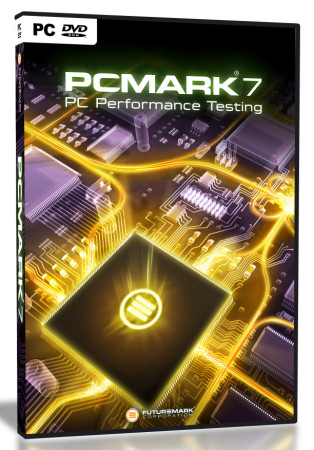 PCMark 7 provides a set of 7 PC tests for measuring different aspects of PC performance. Overall system performance is measured by the PCMark test. The Lightweight test measures the capabilities of entry-level systems and mobility platforms unable to run the full PCMark test. Common use performance is measured by the Entertainment, Creativity and Productivity tests. Component performance is measured by the Computation and Storage hardware tests. The Storage test is meant for testing solid state drives (SSDs) and external hard drives in addition to the system drive. 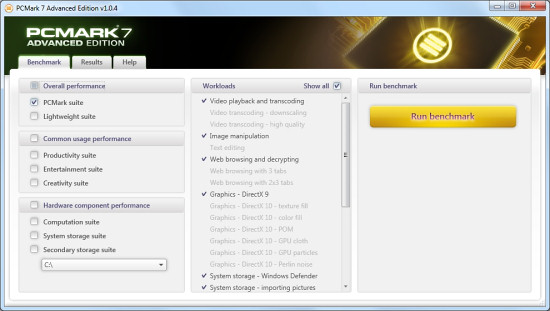 Comparison of different editions:
And a few screenshots of various tests: 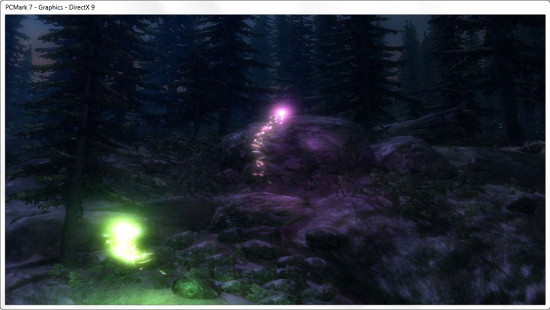 Graphics DX9 Workload  Image Manipulation Workload  Video Playback Workload Source: Futuremark Gigabyte Launches Eleven Z68 Motherboards, To Launch Nine More Gigabyte yesterday launched as many as eleven motherboards based on the Intel Z68 Express Chipset and supporting the new 2nd generation Intel Core processors. Apart from innovations like Intel Smart Response Technology and Virtu, boards also feature mSATA drive connectors. The nine more models, including at least 4 mSATA versions, will be introduced in June. Here's a list of available models with links to their respective product pages.
And here's a couple of photos and some specs of the highest-end discrete offering, Z68X-UD5-B3. (You didn't think I would provide photos for all eleven motherboards, did you?)  
Source: Gigabyte Panasonic Introduces Its Smallest Interchangeable Lens Camera Panasonic today introduced LUMIX DMC-G3, a new addition to the LUMIX G Series of Compact System Cameras (CSC) and the company's smallest and lightest digital interchangeable lens camera with a viewfinder to date. LUMIX G3 features a new 16.0-megapixel sensor and offers 1080p video recording capability with stereo sound in AVCHD.  For the camera traditionalist, the LUMIX G3 provides a traditional DSLR-like Mode dial for quick access to common modes like Program, Shutter and Aperture Priority, Manual. Additional dial settings include two Custom Modes, Scene Modes and a Creative Control Mode. LUMIX G3 also has a dedicated video button that can be used to switch to video capture quickly without changing modes. Like most traditional DSLRs, LUMIX G3 provides a built-in flash and hotshoe for connecting optional LUMIX flashes. The camera also has an eye-level electronic viewfinder that projects a 1.44m-dot image with 100% field of view (800x600, 0.7x magnification). In addition, color breakup has been improved when compared to LUMIX G2.  To enhance operability and ensure that it's user-friendly, LUMIX G3 features touch-control shooting and Auto Focus (AF) tracking. In addition to its 23 Area Auto Focusing Points, the LUMIX G3 features new Pinpoint AF. The latter allows precise near–pixel-level focus point setting at the touch of a finger. For example, unlike DSLRs that limit the number of fixed hardware focus points, Panasonic's Pinpoint AF can be set by touch control to very fine points anywhere on the LCD. With a new Precision Contrast LightSpeed AF system, the LUMIX G3 is very fast, measuring approximately 0.1 second (14-140mm ~0.1 sec. 14-42mm ~0.18 sec., 45-200mm ~0.15 sec.).  For added ease of use, the LUMIX G3 features Panasonic's iA2 and new iA Plus modes, which are enabled automatically once the iA button is pressed. Panasonic's iA features, such as Intelligent Resolution, MEGA O.I.S. (included in several lenses), Intelligent ISO Control, and Intelligent Scene Selector are available when shooting still images. However, Panasonic's new iA Plus mode adds greater flexibility with real-time visual feedback between automatic and manual shooting features:
The LUMIX G3 can shoot in bursts of either 4 fps at full resolution with the mechanical shutter enabled, or 20 fps using the electronic shutter feature at a reduced resolution of 4 megapixels. As with many interchangeable lens cameras, dust on the sensor reduces image clarity. To fight this, LUMIX G3 uses a supersonic wave filter in front of the Live MOS sensor. Vibrating vertically around 50,000 times per second, the filter repels dust and other particles. LUMIX G3 utilizes the Micro Four Thirds (MFT) System mount that currently offers a selection of 11 fixed focal length and variable aperture G Vario zooms, including a 3D lens capable of capturing both 2D and 3D images at the same time. There are lens adaptors available for mounting older Leica M and Leica R lenses, including prior LUMIX full Four Thirds lenses.  Panasonic LUMIX DMC-G3, made of aluminum, will be available in a variety of colors, including black, red, white and brown, starting in June 2011. The suggested retail price with the 14-42mm Zoom Lens Kit will be $699.99. Source: Panasonic VIA Announces New VIA QuadCore Processor VIA Technologies today announced the launch of the VIA QuadCore processor, the lowest-power quad-core processor on the market today. It combines four 'Isaiah' cores on two dies, offering enhanced multi-tasking and better multimedia performance on a low power budget. 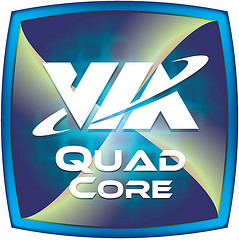 Initially available at a speed of 1.2+ GHz, VIA QuadCore processors are based on an out-of-order x86 architecture and are natively 64-bit compatible. They also come with a host of additional performance features including Adaptive Overclocking, 4MB L2 cache, and the 1333MHz V4 Bus. The TDP is 27.5 watts. Other advanced features include VIA VT virtualization, a technology that allows legacy software and applications to be used in virtual scenarios without impacting on performance, and VIA PadLock with the Advanced Cryptography Engine that offers AES data encryption on the fly — an essential tool in content protection and system security. 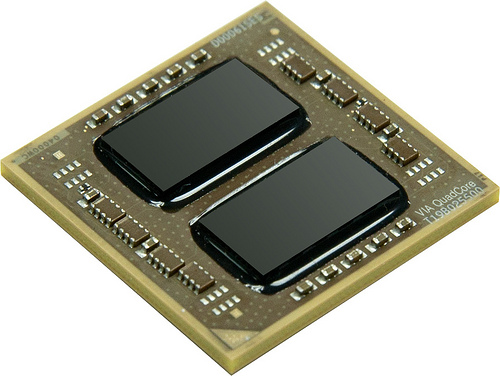 VIA QuadCore processors are manufactured using the latest 40-nm process, and feature a VIA NanoBGA2 package of 21x21 mm with a die size of 11x6 mm. They are also fully pin-to-pin compatible with VIA Eden, VIA C7 and VIA Nano E-Series, and VIA Eden X2 processors. Source: VIA Technologies
Write a comment below. No registration needed!
|
Platform · Video · Multimedia · Mobile · Other || About us & Privacy policy · Twitter · Facebook Copyright © Byrds Research & Publishing, Ltd., 1997–2011. All rights reserved. |